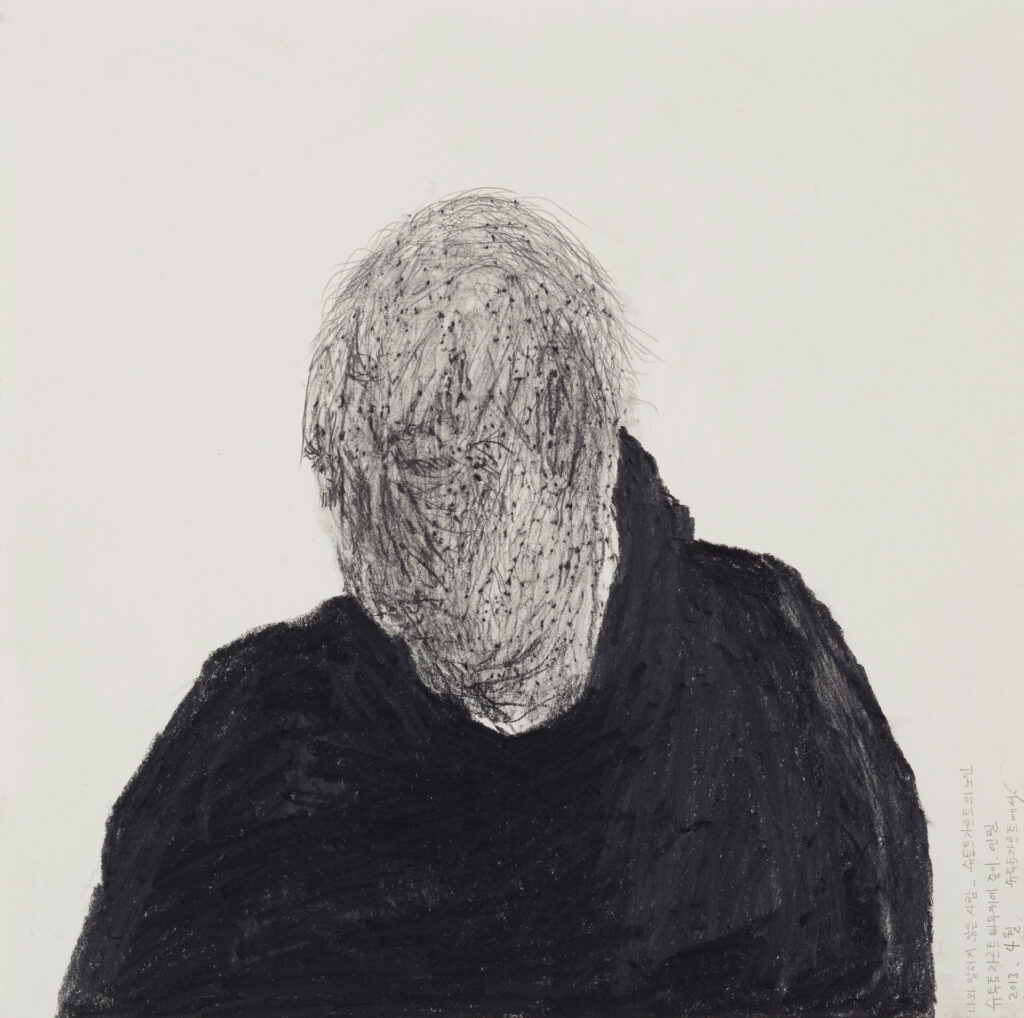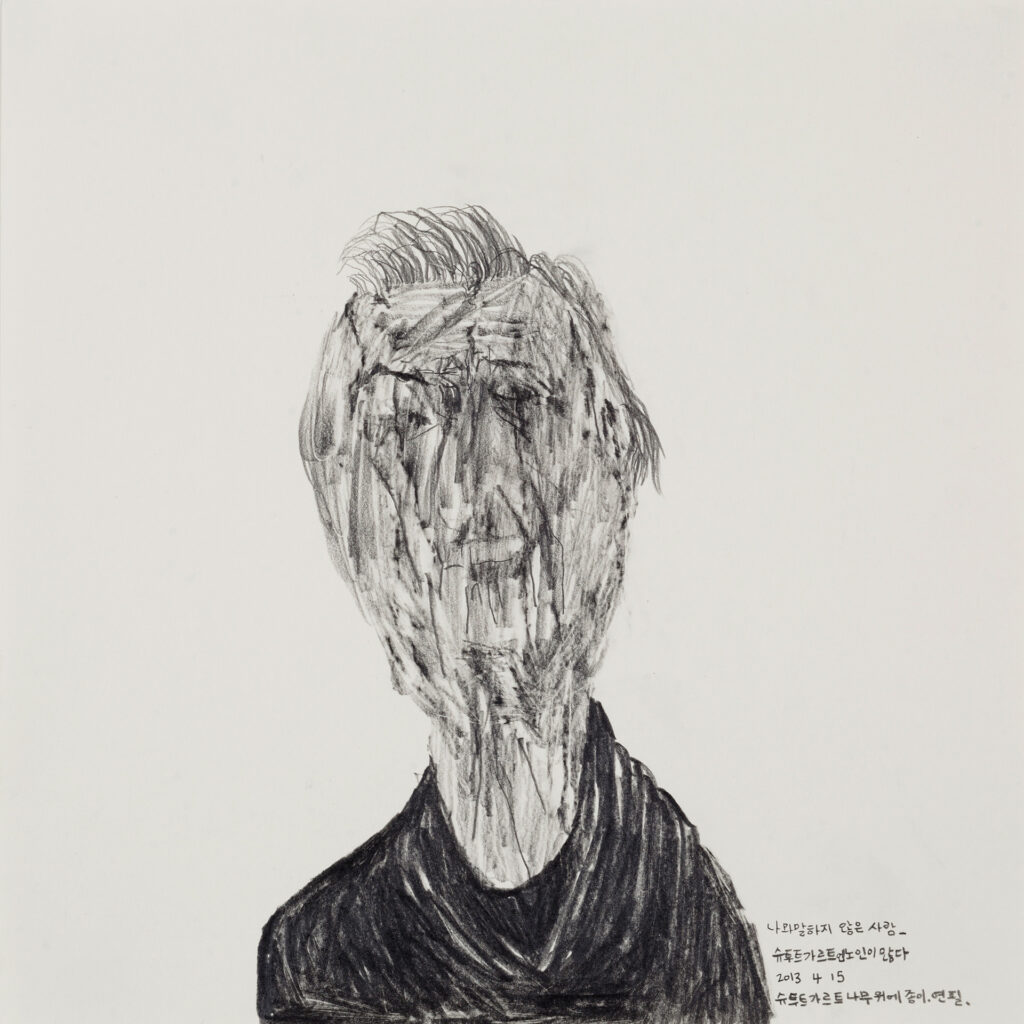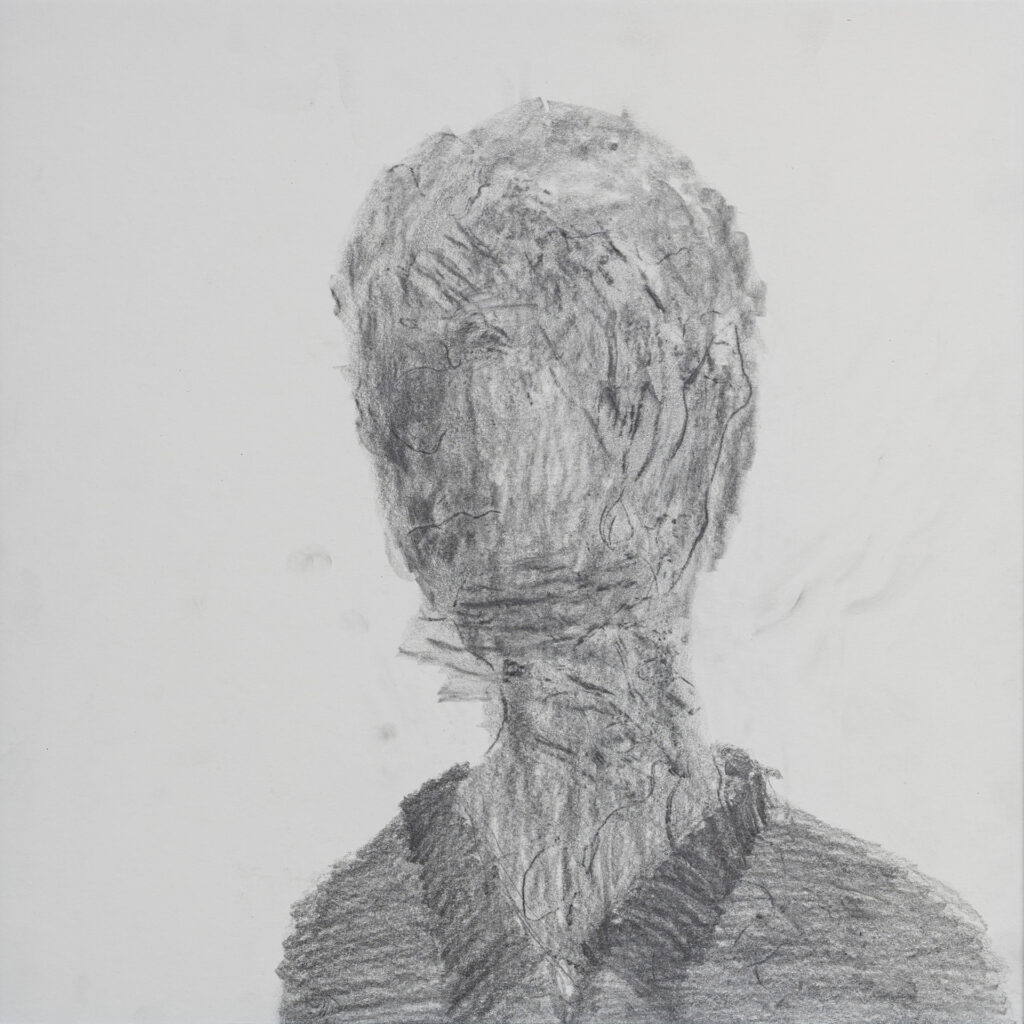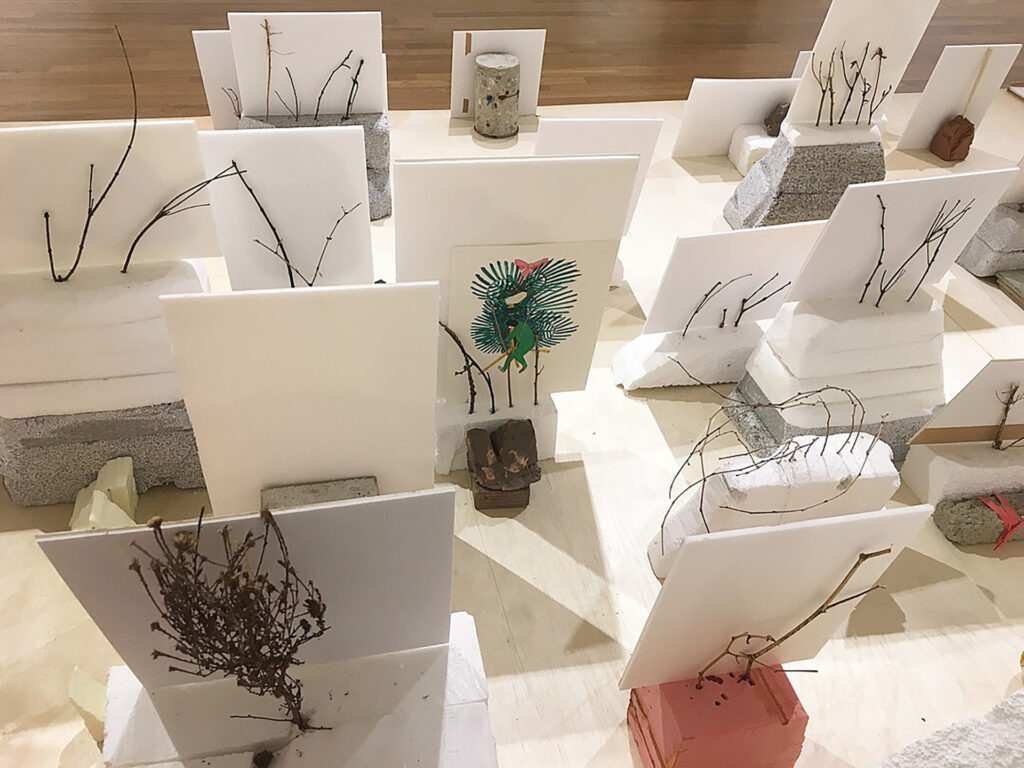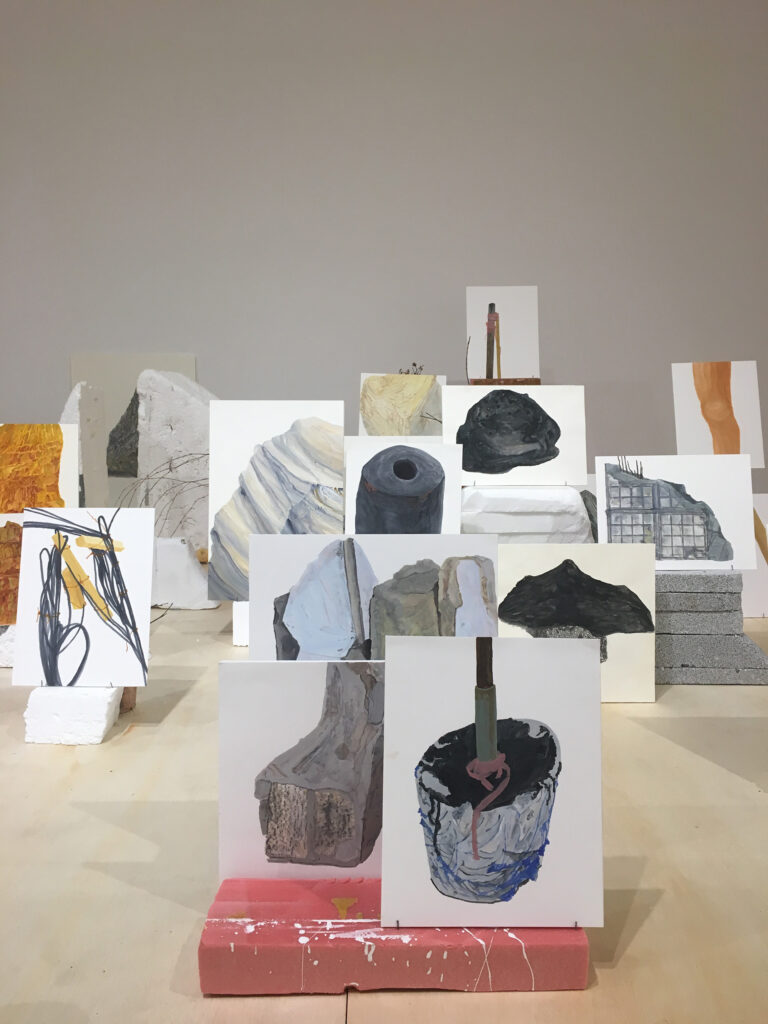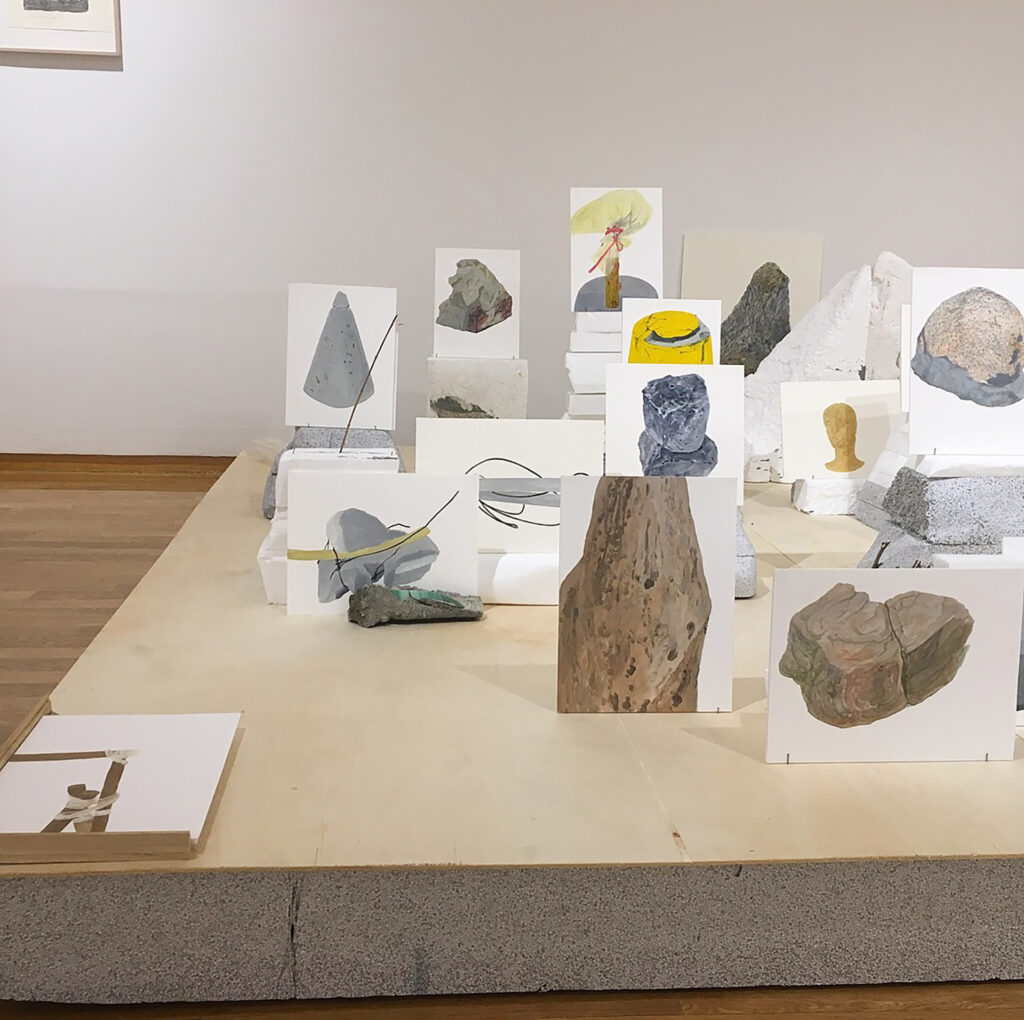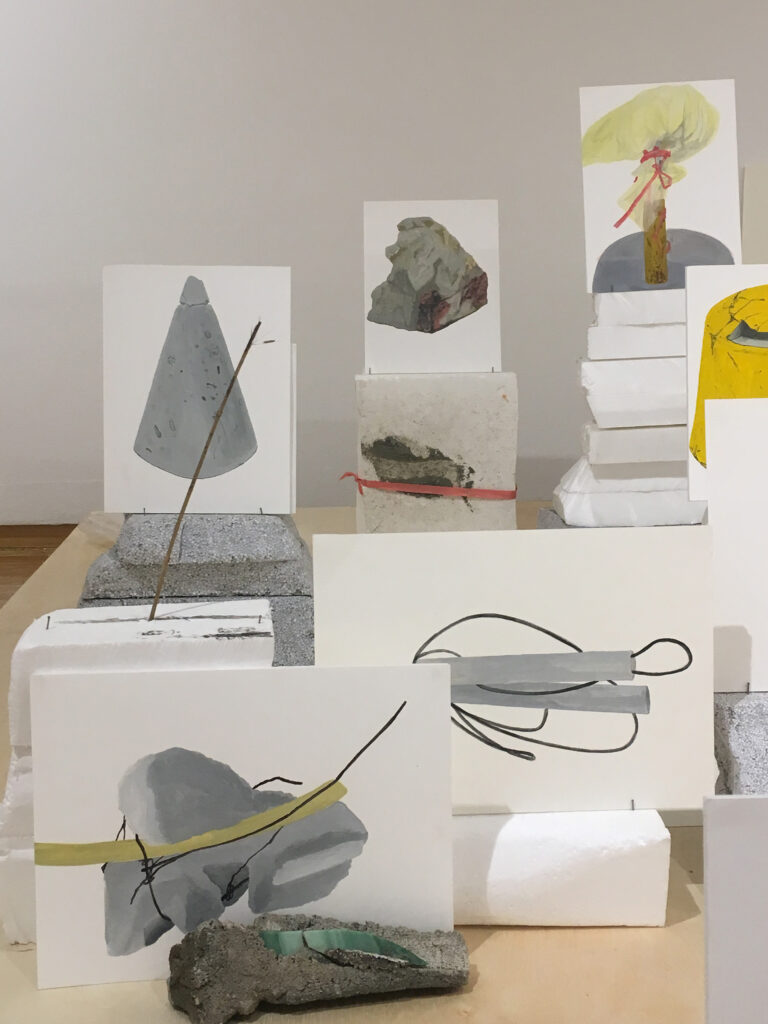The Inanimate Subjects
Haiminsun Lee
Haiminsun Lee’s works are set in desolate places. In fact, they are so desolate that it almost seems wrong to even call them places: an empty wilderness, with water collecting in pits where the ground has caved in and high ridges, sharp cliffs, and huge piles of red earth blocking out the background. Some works feature animal shapes made from abandoned branches, artificial flowers, or discarded plastic bags and cords, while others are occupied solely by plain lumps of red earth. The sense of desolation, which inevitably evokes the inner mind of the artist, forms the primitive aura of the stage where her pictorial narrative unfolds.
Most of the works in this exhibition, entitled The Inanimate Subjects, come from three of Lee’s series: Cast (2013), Inanimate (2013–2017), and Where the Man Who Lost His Golden Tooth Was Headed (2018). First, Cast comprises portraits of elderly strangers that the artist painted in Stuttgart, Germany in 2013. Labeled with implicative phrases, such as “someone who has not talked with me,” the blurred, ghost-like faces of the subjects convey a strong sense of psychological distance and isolation. Second, the Inanimate series includes oil paintings of inanimate objects (e.g., a stone, a piece of concrete piece, a discarded object, etc.), each rendered on paper in the style of a portrait and propped up with dry branches. Third, the Where the Man Who Lost His Golden Tooth Was Headed series consists of landscapes of metaphorical scenes, painted with graphite and oil. Stones piled up like mountains are prominently featured, dwarfing any human figures who might be present. In one painting, two people in the foreground seem to be fighting over something, while others show people dodging one another’s fists or falling on the ground.
As the exhibition title indicates, both the objects and people featured in the works of The Inanimate Subjects have distinct personalities, yet also seem to be excluded from personality. In Lee’s portraits of the elderly, the subjects gaze out from the image with blank, unfocused looks, as if having lost their detailed and corporeal expressions to become like the rocks and fragments of concrete. In the installation works, individual inorganic items are depicted like people, in the manner of a portrait, but the works are tenuously supported by dried twigs inserted into a Styrofoam stand. Finally, the paintings of heaps of rocks often look empty, until two tiny people appear, fighting an uphill battle, almost indistinguishable from the rocks. By losing his golden tooth amongst the rocks, the man has also lost his subjecthood. As art critic Soyeon Ahn noted, the two people have a fruit and a stone on their brawling arms, perhaps representing the final hope for redemption for those who flicker between organic life and mineral existence.
Lee’s paintings resonate with her impressive skills with the brush. She masterfully expresses the translucence and compressed emotion of her empty places through a variety of innovative techniques, such as using swift brushstrokes of light paint to express the barren surface of the earth or repeatedly stirring the paint into foam to capture the texture of soil. Her spaces remind us of dramatic headlines relating to war, disaster, fear, expulsion, alienation, and loss, eventually evincing a time zone from which humans have disappeared. All that is left is a frighteningly realistic dystopia, inhabited by only a few beings and non-beings. In Haiminsun Lee’s works, it is the worldview revealed by the pictorial texture that is most significant.
I stared at one particular area for a long time, without quite knowing what I was looking at. On the elbow between the two people are what appears to be a piece of fruit and a pebble, painted with the same size as if to strike a balance. Looking at this surprising form, which was neatly and carefully placed where it was least expected, I could not help but feel sorrow for the utter futility of these people, completely isolated and trying so desperately to balance these tiny objects. This led me to imagine the back of the artist as she paced in front of the image, endlessly picking up and putting down the brush and pencil, eventually deciding to delicately add a fruit and pebble on the elbow. What was her intention? She must have been looking for this place—a place she visited as an artist, a distant and unknown place where vulnerable forces intersect, which is deeply imbued with profound emptiness that is not easy to perceive.
from “About What She Is Looking for and What I Am Seeing, and the Weight and the Texture of a Void” by Soyeon Ahn (art critic)
